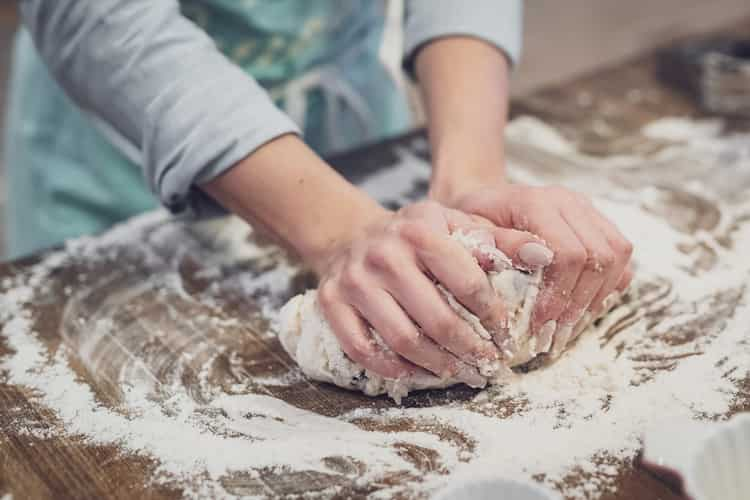To be better at baking cakes, desserts, breads and pastries, understanding that the science really involves in precise execution, as much as it does on quantitative accuracy, is necessary. As a time-heavy activity that demands close attention and care, following an elaborate recipe can sometimes come across as intensely taxing. When a recipe uses specific terms that require the need to apply some kind of a method in order to achieve desired results, knowing exactly what to do becomes crucial in the process. Having a ‘cheat sheet’ handy to decode recipes and make the most of your time spent in the kitchen can improve the experience significantly. Here are some often-used terms and what each one means in a recipe.
Fold
A technique that involves gently incorporating ingredients or mixtures without using a whisk, folding is usually done with a wooden or rubber spatula. Usually used as a method to reduce or avoid gluten formation and making a batter dense or chewy, a scooping-and-folding motion is used to combine ingredients. For example. stiff egg whites being folded into pancake batter or a sponge cake batter. This technique is often used for recipes like souffles, meringues and mousse to give it a light and airy mouthfeel.
Knead

A step often used while baking bread or cinnamon rolls, kneading is the process of hand-mixing or electric-mixing a higher volume of dry ingredients with wet ones. The idea behind kneading is to activate the gluten in flour, as well as to form a smooth, even-textured elastic ball. Along with increasing the elasticity of the gluten strands, kneading also allows for dough to stretch and expand as it rises. Avoid over-kneading when the technique is used in a recipe, to avoid making dense or dry breads, and try to stop once you have a mixture that is fully formed and shaped.
Proof
Typically used as a resting method for all kinds of yeast-based breads, proofing is allowing a batch of dough to rise before it is ready to bake. Proofing dough for bread allows the gluten present in the dough to relax and regain its airiness, doubling it in size as a result. One way to tell if your dough has proofed enough, is to gently poke the surface with a finger – if the indent fills up gradually, then your dough is ready for baking.
Cream

Image Credits: Land O'Lakes
A simple process that involves beating together butter and sugar using a manual or electric whisk, creaming in baking allows for the creation of air pockets which lighten and leaven cakes, frostings and cookies. Ensuring that the butter is soft and at room temperature, is a key detail for smooth creaming and avoid having granules of sugar standing out separately. Creaming and combining the fat base and sugar thoroughly until you have a light and fluffy mixture, is also helpful in making cakes moist and cookies gooey.
Also Read:
Blind Bake
A process that is typically used to paritally or fully bake the crusts for pies and tarts, blind baking allows for the retention of the flaky or crumbly texture of the pie crust, before any filling is added. Usually followed for recipes that involves baking custards or fruit fillings, which might have a tendency to seep through the crust and make it soggy, blind baking involves weighing down a pie dough made with cold, solid fat using a sheet of parchment lined with beans or lentils. Pricking the crust before blind baking can help avoid shrinkage or puffing up while it bakes in the oven.
Sift

The technique of sifting usually involves passing dry ingredients like flour, baking powder and cocoa powder through a sieve to break up any lumps as well as aerate the ingredients. Sifting allows to create a more uniform consistency before batters are mixed for cakes and other delicate pastries. While it gives a lighter texture to baked goods due to aeration, sifting dry ingredients together for a recipe also facilitates uniform mixing with wet ingredients.
Bloom
When making puddings, trifles or jellies, placing a few sheets of gelatin in cold water to let them soften is what blooming essentially involves. This process makes it easier for the gelatin to combine with other ingredients and disperse more effectively into the liquid, without leaving behind any lumps. Using canned juices or wine is advisable while mixing bloomed gelatin with liquids to thicken or stabilize ingreidents like whipped cream, puddings, curds and marshmallows.
Macerate

Image Credits: Once Upon A Chef
Used most often to soften fresh fruits and draw out their natural juices, macerating is an excellent technique to make jams, compotes, sauces and spreads. For example, sprinkling a tablespoon or two of sugar over strawberries and gently mashing them with a fork, allows the sugar to draw out natural moisture from the fruit as well as soften it at the same time. Additionally, liqueurs, wines and juices can also be used as a medium to draw out a fruit’s natural flavours.


